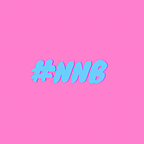What Are You?
Thoughts on a lifetime of fielding an impossible question.
I never knew how to answer when people asked me: “What are you?”
I’m an American
I’m a 3rd grader
I’m a girl
I never knew how to make it funny, how to illuminate the absurdity of the question: “What are you?”
I’m an exploded star
I’m a figment of your imagination
I’m a human
I never knew why strangers of all ages felt entitled to ask this question, so sometimes I asked: “What do you think I am?”
Filipino
Peruvian
Hawaiian
Korean
Japanese
Native American
Chinese
Mongolian
Mexican
Indonesian
Thai
Nope!
But the question never left me alone. And the right (abbreviated) answer was sometimes more disappointing:
Just Chinese. And White.
The full answer (which I stopped sharing after being shamed in drama class):
Chinese
Polish Jewish
English
Swedish
And more?
I never knew this question that caused a crisis of identity at 11 would perpetually cause confusion in both the speaker and in me.
I never knew I was “other” until I started reading YM (“Young Miss,” a now-defunct competitor to Seventeen magazine) where it was quite clear no one in the glossy pages had thick dark hair, freckles, and slightly “almond eyes” like me. I wasn’t disappointed, I was emboldened.
Finally, here was a line of logic: If I don’t look like who I see in the magazines, and if people keep asking what I am, I should be able to tell them! Starting with my lineage: my father is White and my mother is Chinese.
But the math failed me. How does one appear half-Chinese AND half-White? How can I be biologically half-Chinese and half-White, but look and act much more White? What does it mean to be White? What does it mean to be Chinese? To be Chinese and outside of China? Why am I made to feel shame for not speaking Cantonese when only one person in my family speaks the language?
I never knew how to claim my unidentifiable identity after being asked, “What are you?”
I’m mixed
I’m biracial
I’m hapa
A turning point was when, on the shelves at Barnes & Noble, I came across a book by Kip Fulbeck. The title alone was the answer to the puzzle I could not solve about my own self.
It was called, “Part Asian, 100% Hapa.”
And inside, portraits of people like me. Next to their portrait, their lineage, and their handwritten response to the question:
“What are you?”
This was the representation I needed. Not only in images but in the range of emotions and tone. Black and white evidence of the weight of the question that starts with “what” not “who.”
I wasn’t alone. Even if my mom, dad, aunt, grandma, boyfriend, and best friend couldn’t empathize with my gargantuan crisis of identity, here was corroborating evidence that my experience wasn’t singular.
Everyone else had been exhausted by the question before.
And every one of us is in fact singular in our appearance.
I don’t have to choose one culture or community over the other. I can be both. I can be “more Chinese” or “more White” depending on how I define what that even means. How I identify is not even entirely in my control but is dependent on how the worlds I walk in perceive me.
“Wokeism” of the 2020s hasn’t solved my problem of self. We are talking more about diversity, but we’ve only just scratched the surface of how to discuss intersectional identities and cultural and contextual nuance. The language to self-identify still doesn’t sit quite right.
I’m half-Asian American
I’m a woman of color and of white privilege
I’m “other” or “more than one race” on government forms
I’m 31 and maybe the question “What are you?” is the existential question I’ll struggle to answer for the rest of my life. The question whose answer does and should always be changing. Here’s my attempt for today:
I’m American
I’m all love, born of love
I’m an outlier whose existence challenges racial constructs
I’m learning
